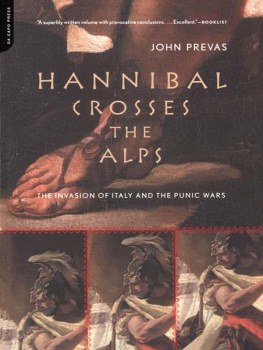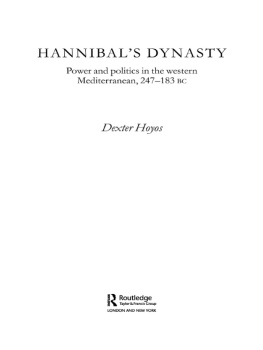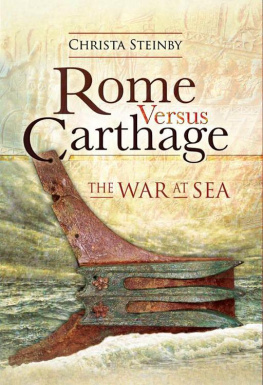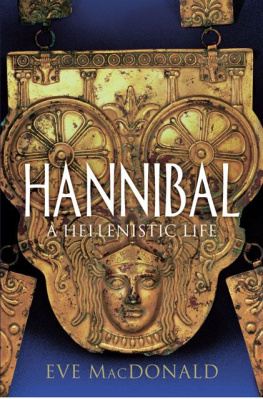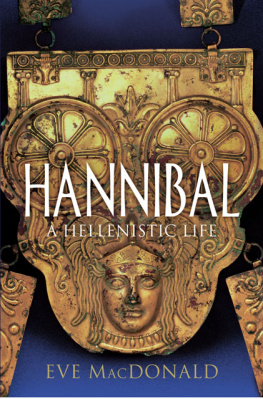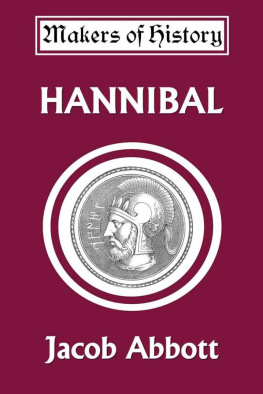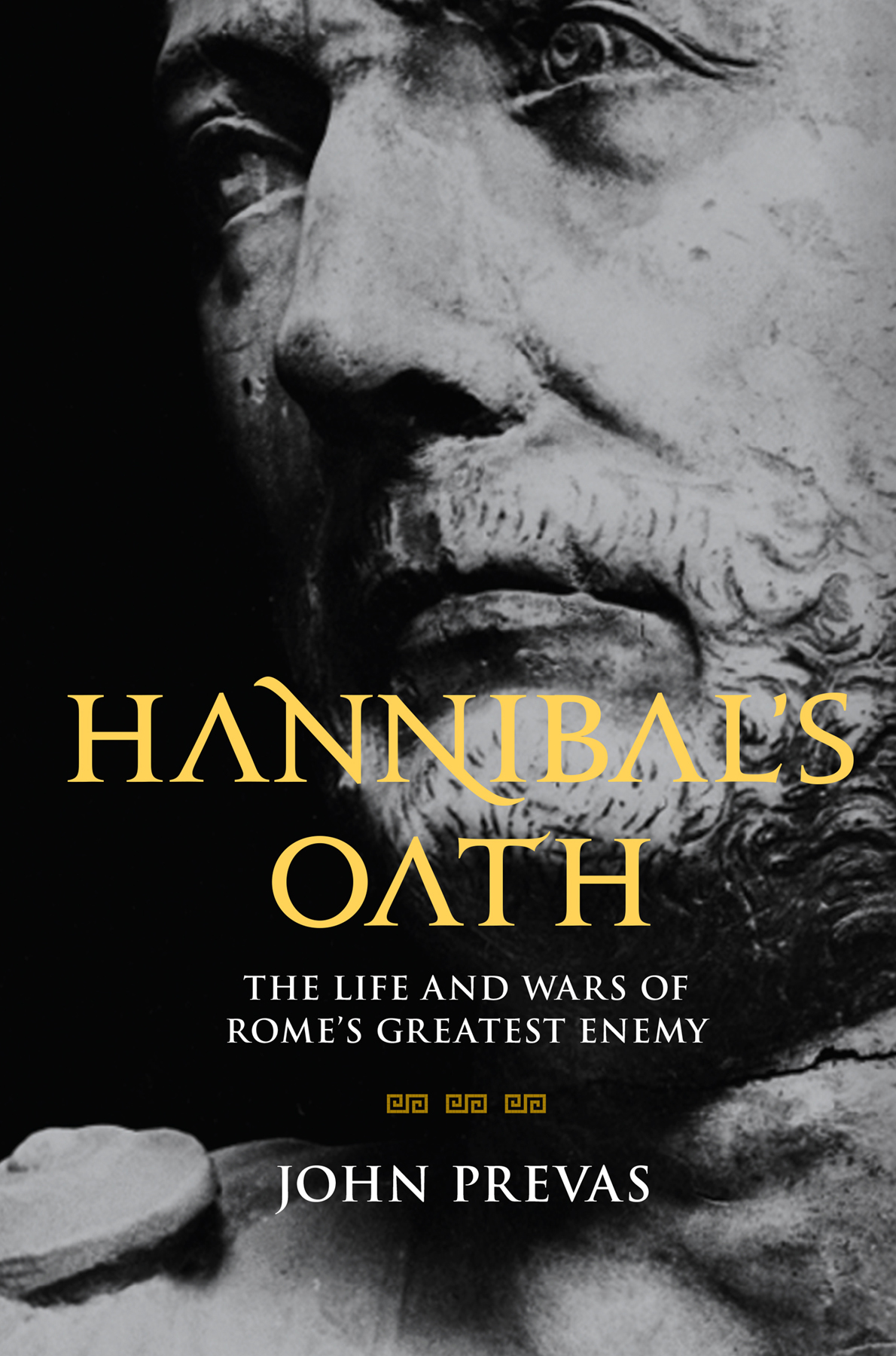Copyright 2017 by John Prevas
All rights reserved. No part of this publication may be reproduced, stored in a retrieval system, or transmitted, in any form or by any means, electronic, mechanical, photocopying, recording, or otherwise, without the prior written permission of the publisher. For information, address Da Capo Press, 53 State Street, Ninth Floor, Boston, MA 02109.
Designed by Timm Bryson
Set in 11 point Adobe Jenson Pro by Perseus Books
Library of Congress Cataloging-in-Publication Data
Names: Prevas, John, author.
Title: Hannibals oath: the life and wars of Romes greatest enemy / John Prevas.
Description: Boston, MA: Da Capo Press, 2017. | Includes bibliographical references and index.
Identifiers: LCCN 2017007554 (print) | LCCN 2017012699 (ebook) | ISBN 9780306824258 (e-book) | ISBN 9780306824241 (hardback)
Subjects: LCSH: Hannibal, 247 B.C.182 B.C. | Punic War, 2nd, 218201 B.C. | GeneralsTunisiaCarthage (Extinct city)Biography. | RomeHistoryRepublic, 26530 B.C. | Carthage (Extinct city)History. | BISAC: BIOGRAPHY & AUTOBIOGRAPHY / Historical. | HISTORY / Asia / Central Asia.
Classification: LCC DG249 (ebook) | LCC DG249 .P74 2017 (print) | DDC 937/.04092 [B]dc23
LC record available at https://lccn.loc.gov/2017007554
ISBN: 978-0-306-82424-1 (hardcover)
ISBN: 978-0-306-82425-8 (ebook)
Published by Da Capo Press
An imprint of Perseus Books, LLC, a subsidiary of Hachette Book Group, Inc.
www.dacapopress.com
Da Capo Press books are available at special discounts for bulk purchases in the U.S. by corporations, institutions, and other organizations. For more information, please contact the Special Markets Department at Perseus Books, 2300 Chestnut Street, Suite 200, Philadelphia, PA 19103, or call (800) 810-4145, ext. 5000, or e-mail special.markets@perseusbooks.com.
E3-20170819-JV-NF
To Mavis Gibson
M Y INTENT IN writing this book has been to produce a readable and engaging biography of Hannibal for the nonhistoriana book that does not require extensive knowledge of the historical context of the period in order to follow the narrative. Mine is not a book for scholars; it is a book for general readers interested in history and adventure. It is something to be read and enjoyed, not studied. The Punic Wars between Rome and Carthage, for a general reader at least, are a relatively obscure period in ancient history even though those wars transformed Rome from a regional republic on the Italian mainland into an empire that stretched from one end of the ancient world to the other and set the course for the development of Western civilization. Hannibal played a defining role in that transformation.
My interest in Hannibal began over twenty-five years ago while I was teaching Latin in a suburb of Washington, D.C. I was translating the works of the Roman historian Livy with some of my advanced students, and we initially focused on the grammar and vocabulary found in the story of Hannibals crossing of the Alps. As the words were translated from Latin into English and their grammatical context brought into focus, something entirely unexpected and delightful began to take place in that classroom. History came alive. A story of adventure, hardship, and accomplishment began to unfold on the pages of my students composition books. The further we delved into Hannibals story, the more the interest, excitement, and anticipation of the students began to build. The drudgery of grammatical constructions and the tedium of endless vocabulary drills were soon replaced by a fascinating story from the ancient world.
Students were intrigued by this African hero, this leader who did what everyone in the ancient world thought impossible. At first I thought their interest was intended to get me off track, something students are inclined to do. But Hannibals story opened the mysterious and hedonistic world of Carthaginian North Africa and then carried us into Spain, over the Pyrenees, and into southern France. We crossed the Rhone River with Hannibal and followed him into the Alps, fighting nature and the primitive mountain tribes who lined the route. Livys words brought to life, often in fascinating detail, how Hannibal, with his mercenaries and elephants, marched over a thousand miles, fighting hostile Iberian and Gallic tribes, crossing rivers and then struggling over the highest, most remote and treacherous passes of the Alps to reach Italy and begin a major war. Students wanted to learn more, so we even began looking at the sources in ancient Greek.
My students learned how Napoleon duplicated Hannibals feat in the spring of 1800 when he led his army over the Alps to surprise his Austrian enemies. Napoleon bested everyone, not simply by crossing the Alps but by building a road over them that is still used today. Later, in exile, Napoleon wrote, Hannibal was the most daring of all men, perhaps the most astonishing; so bold, so assured, so broad of vision in all things. At the age of 26 he conceived what was scarcely conceivable and carried out what was deemed impossible. He scaled the Pyrenees and the Alps, then came down into Italy paying with half his army the price just to attain a battlefield and the right to fight.larger-than-life action hero from the past. Here was an ancient leader who overcame the elements of nature, beat the odds against survival, won every battle he fought in Italy against the Romans just to lose the war in the end. Why, my students asked, are we so fascinated by this tragic figure?
To prepare for this book I walked in Hannibals footsteps. Everywhere Hannibal went in the ancient world, I went. I covered every battlefield where he fought, crossed every river and mountain pass he crossed, and visited the site of every ancient city he laid siege to. I began in Tunisia, at Carthage where Hannibal was born, and ended on the Asian side of Turkey in a small port town where he died. In the course of my travels, I went to Spain where Hannibal learned to be a soldier and a leader. I visited the ruins of Saguntum, where the war with Rome began, and then followed his path through France, over the Alps, and all through Italy, from the north to the south. I went to Ephesus in Asia Minor and then to Crete and the ruins of Gortyna where Hannibal hid in exile. What that experience taught me, and I hope is reflected in my writing, is how important it is for an author to follow in the footsteps of those whose stories he or she is trying to tell, whether it be a Carthaginian Hannibal, a Persian Cyrus, an Athenian Xenophon, a Macedonian Alexander, or a Roman Caesar or Augustus. Seeing where these leaders went and developing even a partial feel for what they must have experienced matters when it comes to trying to bring them to life and recounting for my readers their accomplishments and failures.
When it comes to the source materials for the study of Hannibal, nothing new has come to light over the last few decades. Those of us who write about Hannibal all rely on the same Greek and Latin literary sources, and then we try to give them a slightly different spin. The current trend is to question, with some reserve, the accuracy and even usefulness of the ancient sources. A form of political correctness seems to have permeated ancient studies. The ancient Greeks and Romans are viewed with skepticism, either because they are regarded as so biased against Carthage and Hannibal due to their hatred of the Semitic civilization that they purposely distorted their accounts and vilified their enemies or because they moved in the opposite direction and exaggerated the strength of their enemies to inflate Romes greatness. So, the sources are either hypercritical of Hannibal or excessively complimentary, making it difficult for any author to sort out which is which and develop a balanced perspective. But Roman attitudes, like most things, changed over time. Hannibal was undoubtedly a terrifying figure in the third century B.C.a threat to Romes very existence. During the war and shortly thereafter, the Romans portrayed him as untrustworthy, perfidious, avaricious, and cruel in nature, a man of inherently violent disposition who lived for one thingto destroy. But later, that attitude moderated, and by the time of the empire, Roman writers adopted a positive view of him. Hannibal came to embody the noble adversary, with the virtues and characteristics that had heretofore been reserved for their heroes from antiquity. That image has carried forward over the centuries and into our own time. But as this work will show, Hannibal was a complicated mix of the best and worst in human naturea man of incredible self-confidence, intelligence, tactical genius, generosity, and compassion on the one hand and unfathomable cruelty, callousness, and greed on the other.


